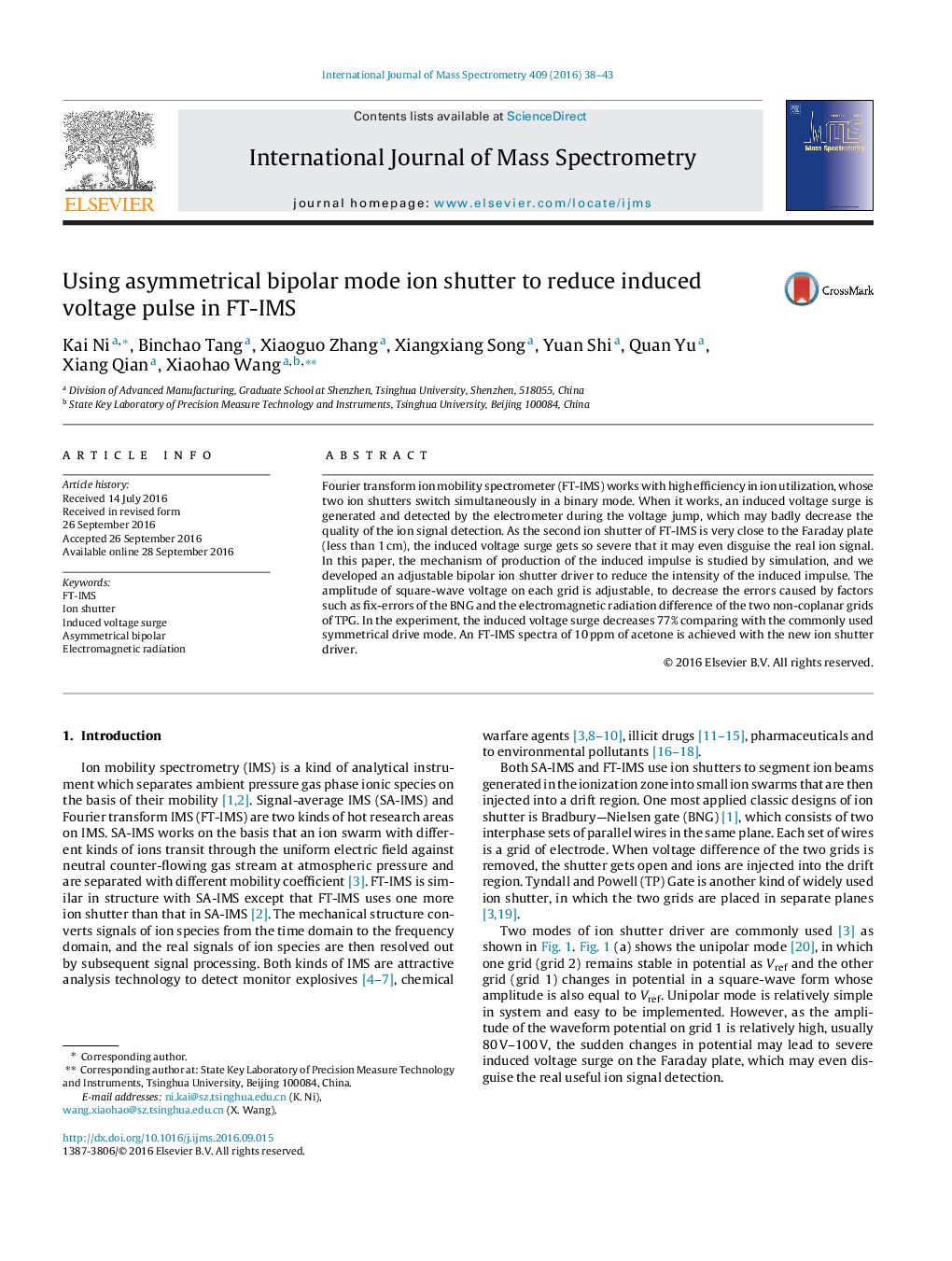| Article ID | Journal | Published Year | Pages | File Type |
|---|---|---|---|---|
| 5134358 | International Journal of Mass Spectrometry | 2016 | 6 Pages |
â¢Capacitance model is built and simulated to explain the mechanism of the produce of the induced voltage impulse.â¢The induced voltage intensity can be effectively reduced by adjusting the voltage difference on the shutter grids.â¢An adjustable asymmetrical bipolar ion shutter driver is developed to reduce the intensity of induced voltage.â¢Experimental results show that the induced voltage surge decreases 77% comparing with the commonly used symmetrical mode.
Fourier transform ion mobility spectrometer (FT-IMS) works with high efficiency in ion utilization, whose two ion shutters switch simultaneously in a binary mode. When it works, an induced voltage surge is generated and detected by the electrometer during the voltage jump, which may badly decrease the quality of the ion signal detection. As the second ion shutter of FT-IMS is very close to the Faraday plate (less than 1Â cm), the induced voltage surge gets so severe that it may even disguise the real ion signal. In this paper, the mechanism of production of the induced impulse is studied by simulation, and we developed an adjustable bipolar ion shutter driver to reduce the intensity of the induced impulse. The amplitude of square-wave voltage on each grid is adjustable, to decrease the errors caused by factors such as fix-errors of the BNG and the electromagnetic radiation difference of the two non-coplanar grids of TPG. In the experiment, the induced voltage surge decreases 77% comparing with the commonly used symmetrical drive mode. An FT-IMS spectra of 10Â ppm of acetone is achieved with the new ion shutter driver.
Graphical abstractDownload high-res image (161KB)Download full-size image
